Shae’s mom and stepdad joined us in California on our 50 state road trip a week before Christmas 2021. A couple of days after they arrived we all headed up to the Avenue of the Giants.
Avenue of the Giants is a route through Humboldt Redwoods State Park which, as the names suggest, contain loads of giant redwoods. The scenic highway is 31.5 miles long which you can explore from north to south or south to north.
We were staying in Fort Bragg, CA which is about 75 miles south of the southern entrance of Avenue of the Giants, so we took the route from the south to the north. The four of us didn’t get to complete the entire drive, but did get to see a lot along the way – here’s what it’s like.

Chandelier Tree At Drive-Thru Tree Park In Leggett
On our drive down from Oregon to Fort Bragg a couple of days earlier, Shae and I had stopped at the Chandelier Tree. It’s a giant redwood that has a car-sized hole carved out of the bottom, so we took advantage of that opportunity to drive through it.
Leggett (where the Chandelier Tree is located) is about halfway between Fort Bragg and the southern entrance of Avenue of the Giants, so we stopped there along the way so that Shae’s mom and stepdad could drive through the tree as well. Check out this post to read more about the Chandelier Tree.
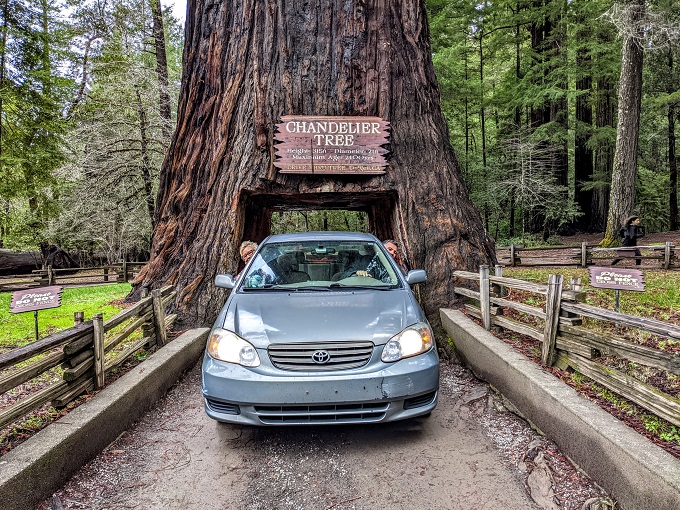
One Log House
We made another stop on the way up to the Avenue of the Giants. About halfway between the Chandelier Tree and the southern entrance is the One Log House.
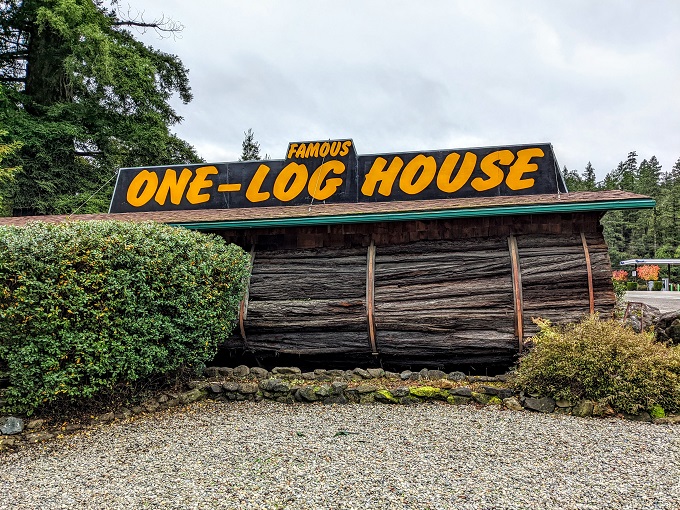
The One Log House was created in 1946 using a redwood that was over 2,000 years old. It took eight months to hollow out the tree, creating a space that’s 7 feet high and 32 feet long.
It costs $2 per person to explore the One Log House which has three separate rooms. You enter into the kitchen which also has a restroom on the right:
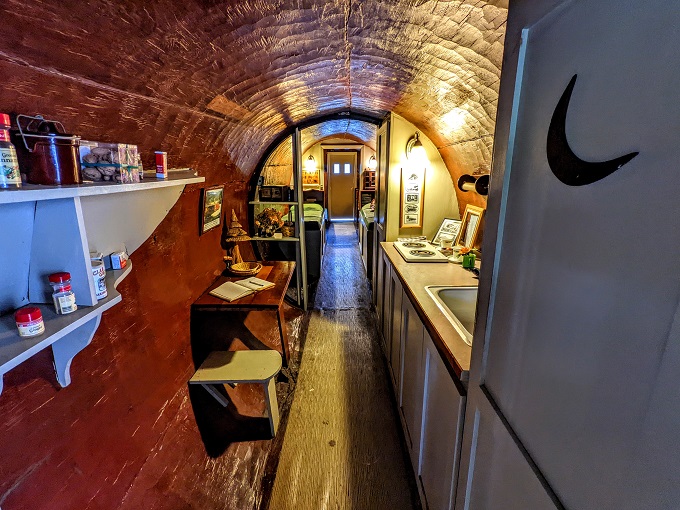
That leads through to the bedroom which has two single beds and bookshelves at the head of each bed.
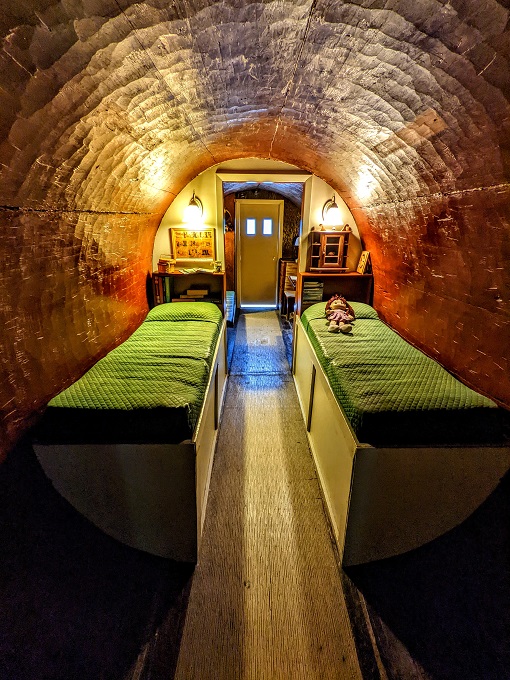
Beyond that there’s a good-sized living room.
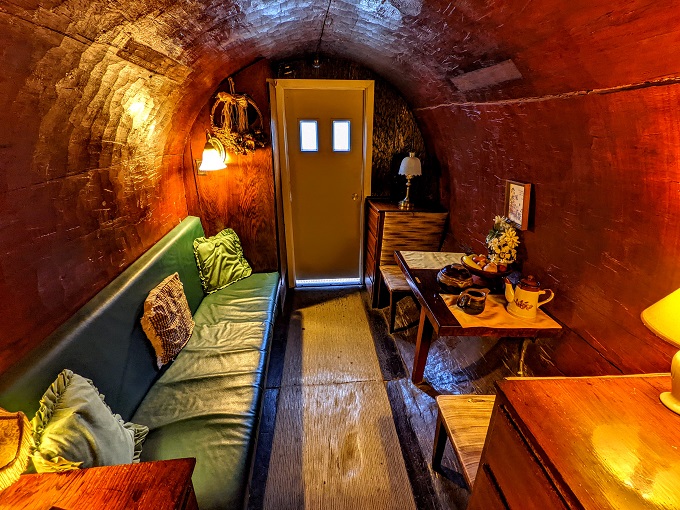
Grandfather Tree
At the same site as the One Log House is a cafe, gift shop and the Grandfather Tree. The Grandfather Tree is 265 feet high, 24 feet across and is thought to be 1,800 years old.
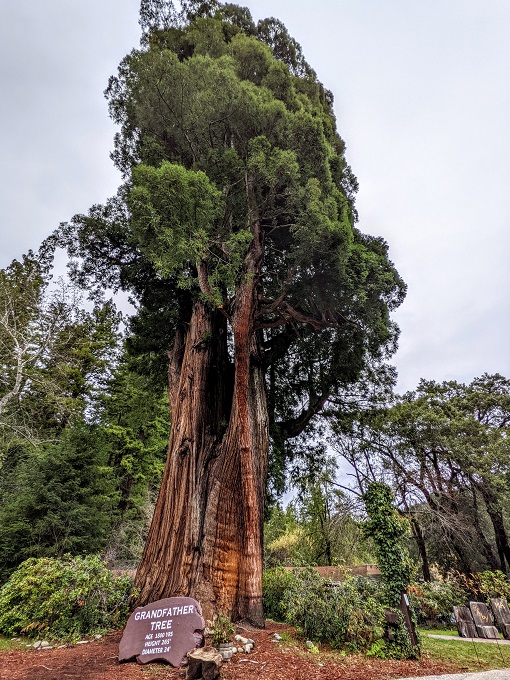
To give a better idea of what a 24 feet diameter looks like, it’s about four arm spans!

You might notice in the photo above that we had our dog Truffles with us. Avenue of the Giants isn’t particularly friendly because dogs aren’t allowed on trails in the groves. Due to how long we were going to be out that day, we brought her along with us and left her in the car when exploring the redwoods. With it being late December, it was nice and cool that day and so we didn’t have any concerns about the car getting hot.
Living Chimney Tree
Our first stop on the Avenue of the Giants itself was the Living Chimney Tree. Free to visit, this tree is “only” 78 feet high, has a circumference of 50 feet 4 inches and has a room diameter of 12 feet 6 inches.
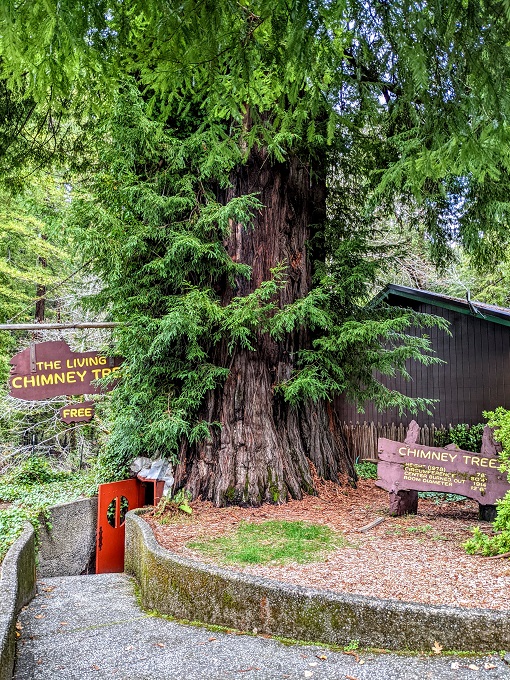
If you’re wondering how a tree has a room in it, it’s because its interior space came about as a result of a fire in 1914. When you’re inside and you look up, it’s easy to see why it’s known as the Chimney Tree.

Franklin K Lane Grove
When entering Avenue of the Giants, we’d picked up a free leaflet which listed a bunch of stops you can make as part of an Auto Tour. The first suggested stop was Franklin K Lane Grove which has a parking lot on the right and some information boards about the area.
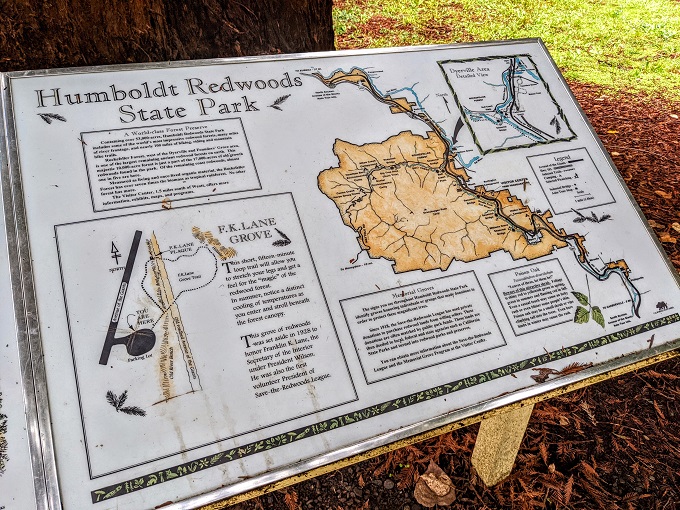
That parking lot leads to a trail through the grove of redwoods.
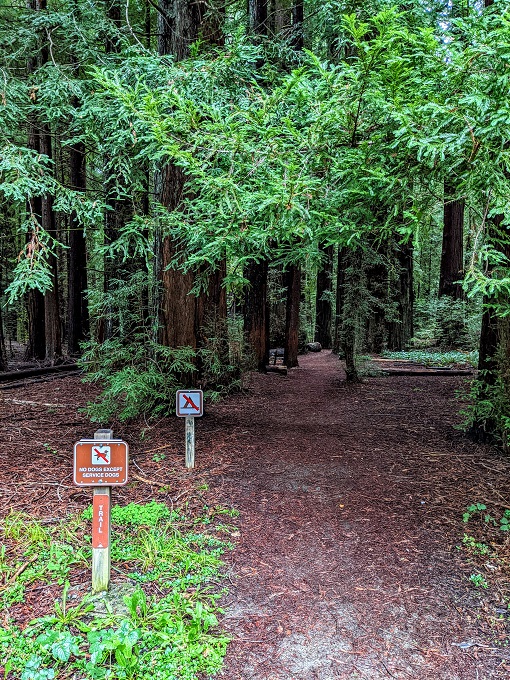
We’d seen redwoods while driving along up to this point, plus we’d stopped at places like the Chandlier Tree, Grandfather Tree and Living Chimney Tree. However, there was something different and more special about standing in this grove surrounded by these towering trees.
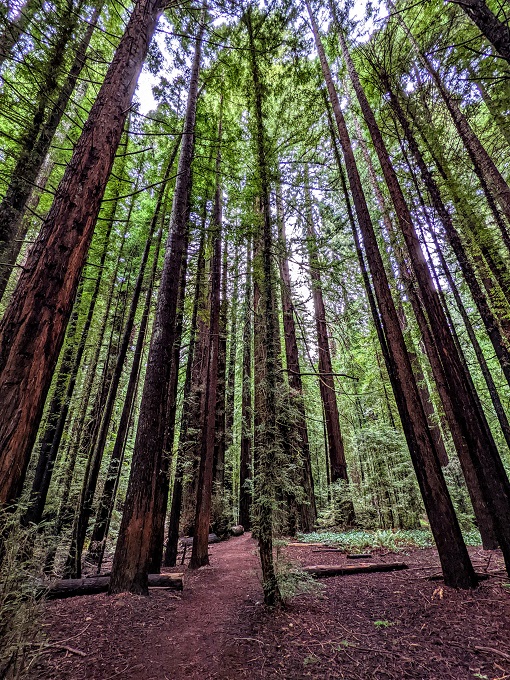
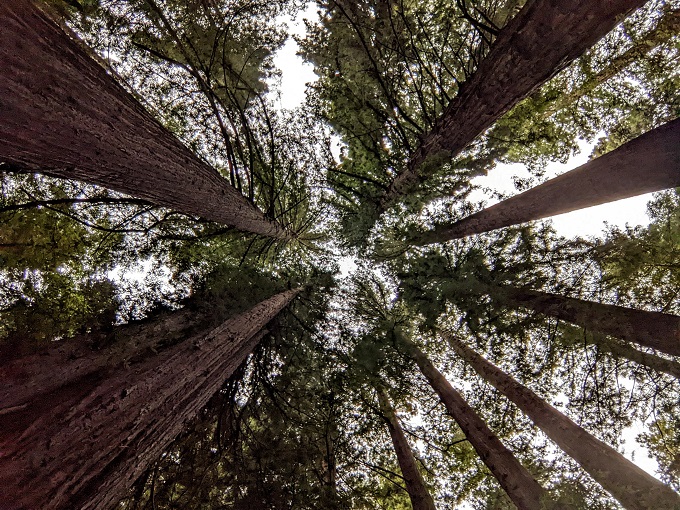
Seeing photos of redwoods online doesn’t give you a true sense of their immensity, so we took several photos standing next to the trees to give a better idea of just how enormous they are.
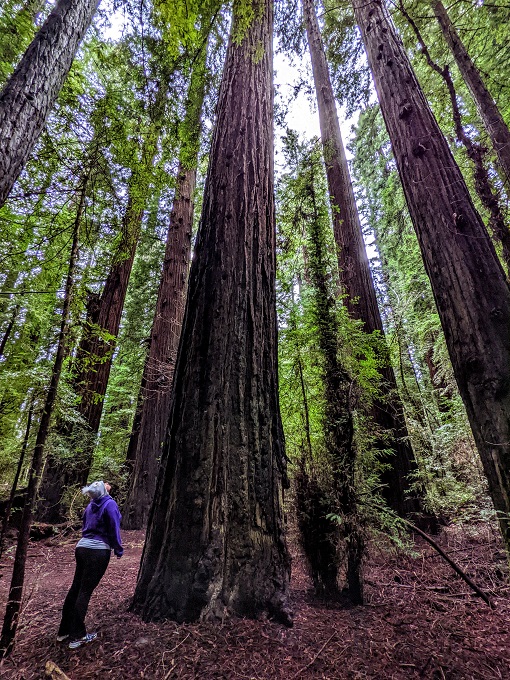
Despite many redwoods growing to 200-300 feet or more, their roots remain shallow – only a few feet deep. The roots can spread out laterally by 100 feet or more, but it does mean that heavy rain can result in them falling easily due to the wet ground.
That’s part of the natural life cycle in Humboldt Redwoods State Park, so trees are left where they land unless it happens to fall across a road or something like that.

Seeing these trees on the ground can help give a better sense of both how tall and wide they are. The tree in the photo above might not look particularly big, but add Shae inside and it suddenly looks massive.
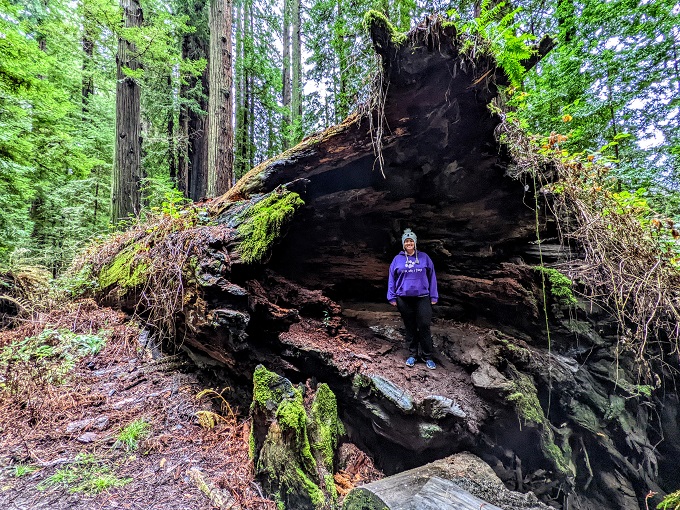
Bolling Grove
The next stop on the Avenue of the Giants Auto Tour was Bolling Grove. This grove was named after Colonel Raynal Bolling who was the first high-ranking US officer to be killed in World War I. It was also the first grove to be purchased in 1920 by the Save The Redwoods League.
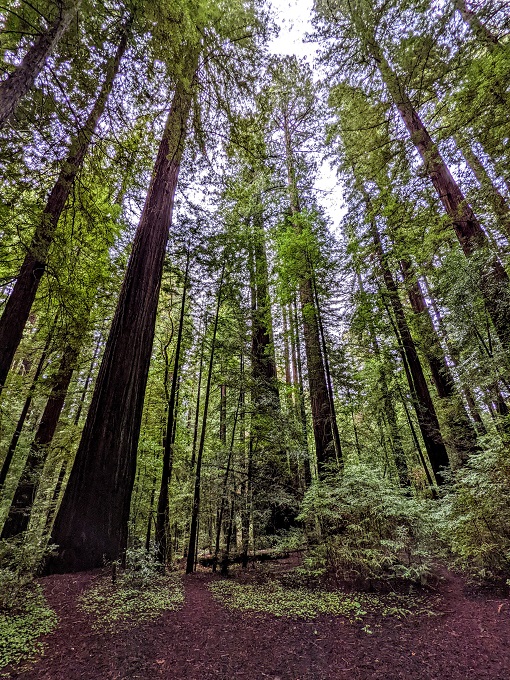
Bolling Grove is next to the South Fork of Eel River, so we took a wander down to the water.
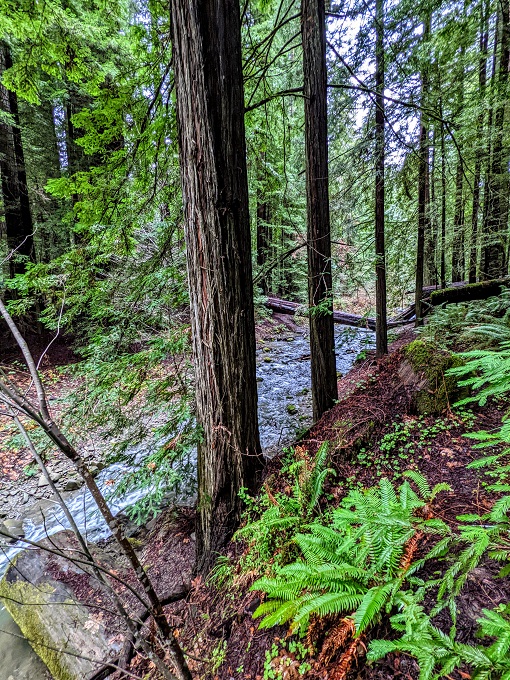
I spotted a redwood spanning the length of the river, so I decided to walk across it. This probably wasn’t the wisest decision seeing as it was wet and my shoes had zero grip, but thankfully I didn’t slip off the tree.

Humboldt Redwoods State Park Visitor Center
Next up was the Humboldt Redwoods State Park visitor center.
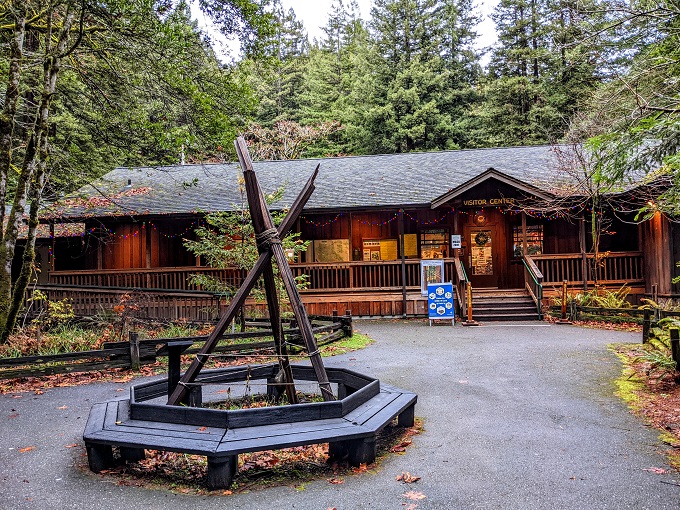
This is definitely worth stopping at on a drive along the Avenue of the Giants as there are lots of interesting exhibits. That starts when you arrive – outside there’s part of a redwood that fell in 2006.

That wouldn’t necessarily be interesting in and of itself, but there’s some interesting information on both sides of it. One side shares that the center of the cut is from 912 A.D.
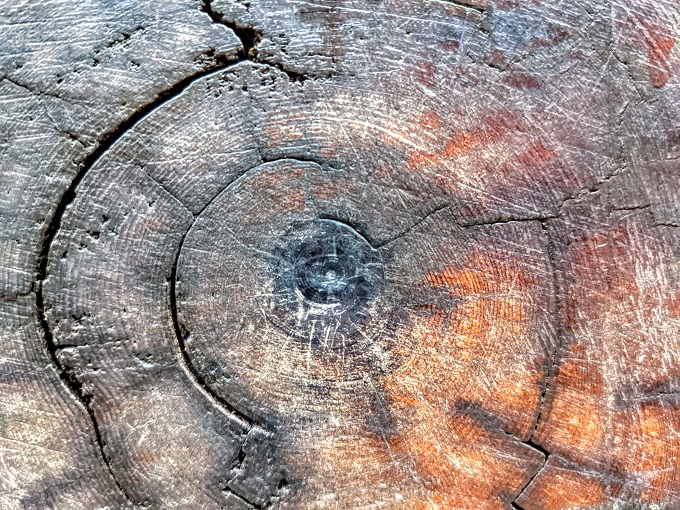
The other side has tags with some notable dates in world history corresponding to the rings of the tree.
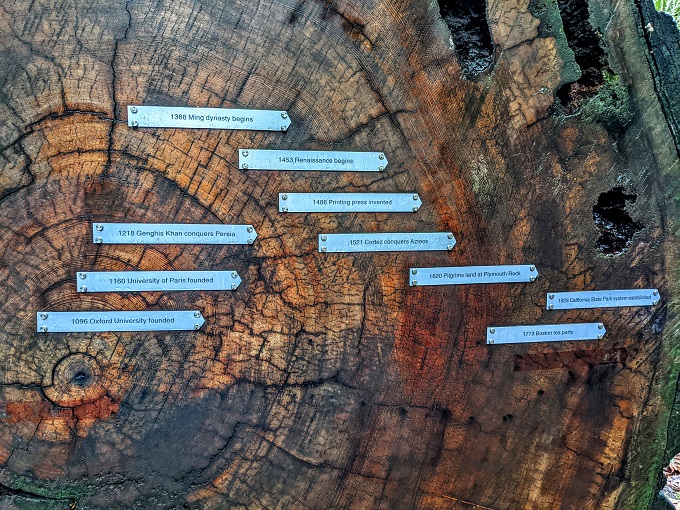
The exterior of the visitor center has several information boards, while inside there’s a gift shop and museum area with even more exhibits.

Weott Intersection
The next stop on the Auto Tour was just a quick one. The Eel River that runs alongside Avenue of the Giants has suffered from many floods over the years. The 1964 flood was particularly bad, with a wooden post showing how high the water level was.
The marker at the top of that post is 35 feet high. It was hard to imagine the river flooding so much that the water could reach that high.
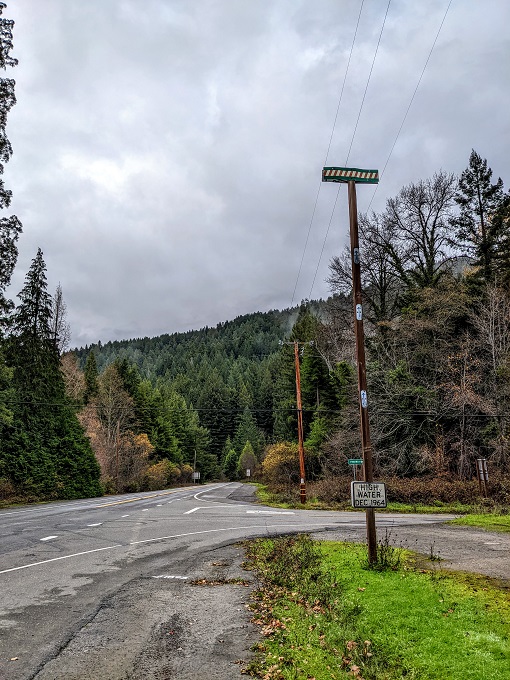
Mahan Plaque
From high water back to high trees. Our subsequent stop was another grove of redwoods that were both high and wide.

The side of one of the redwoods had a giant burl. Burls contain dormant buds which can grow shoots for some time.

The reason we stopped at this grove is because a trail led through to the Mahan Plaque. This is dedicated to Laura and James Mahan who stopped logging in 1924. Laura put herself between the trees and loggers while James went to court to try to get the logging stopped.
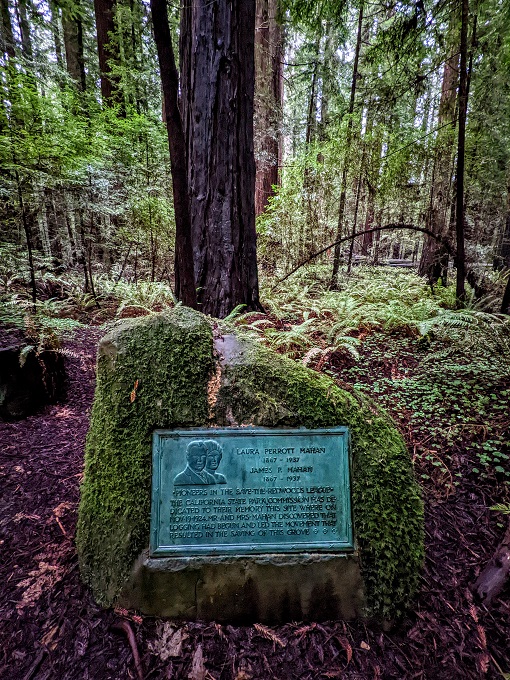
They managed to delay the logging long enough for the Save The Redwoods League to purchase the grove and ensure it wouldn’t be cut down.
Dyerville
From floods to groves and back to floods. Half a mile along from the grove containing the Mahan Plaque is the town of Dyerville. Well, was the town of Dyerville. It was once a shipping port and stagecoach stop, but a flood in 1955 completely destroyed the town.
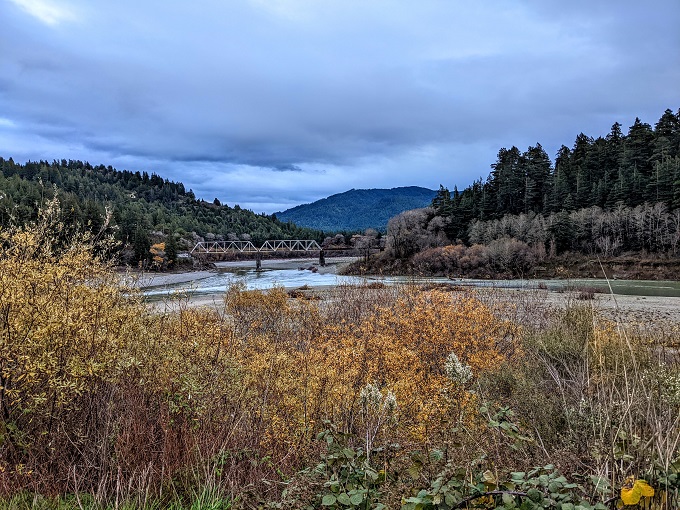
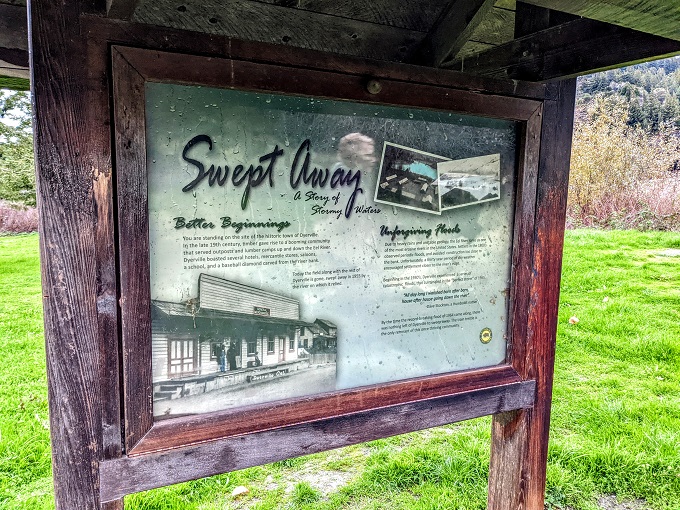
Founders Grove
There were a couple more stops on the Avenue of the Giants Auto Tour guide, but it was getting dark and so we decided to turn back at that point as there was another stop we wanted to make on the way back.
That stop was Founders Grove which is near the Mahan Plaque. Founders Grove is dedicated to the founders of the Save The Redwoods League, the organization that purchased some of the land to protect it from logging.
At the start of the trail running through Founders Grove there are information booklets you can get. You can return them for free or there’s a suggested donation of $1 if you want to keep one.

Near the start of the trail is the Founders Tree which is 346.1 feet tall, although that’s not the tallest tree that stood in Founders Grove.

A little further along the trail there was a tree that had been badly damaged by fire. Despite the fact that it’s hollow at its base, it’s still alive, demonstrating how resilient these trees can be.
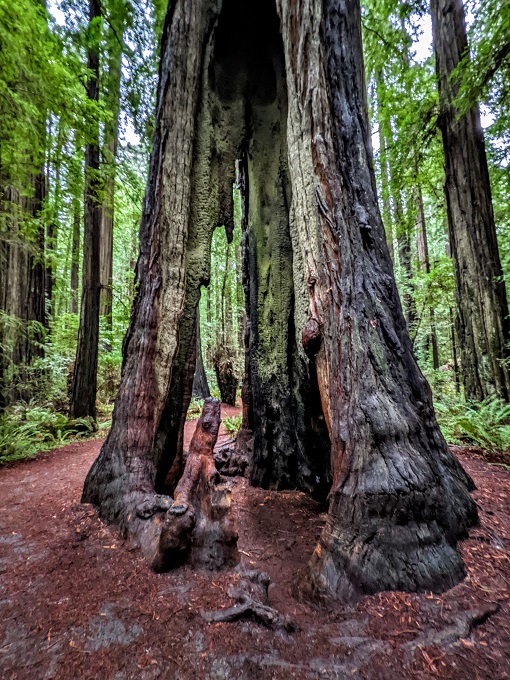
Perhaps the most notable tree in Founders Grove is the Dyerville Giant. This once stood at least 362 feet tall and is thought to weigh more than 1 million lbs. This tree fell following a rainy season; one tree fell into another; that tree subsequently fell against the Dyerville Giant which came crashing down too.
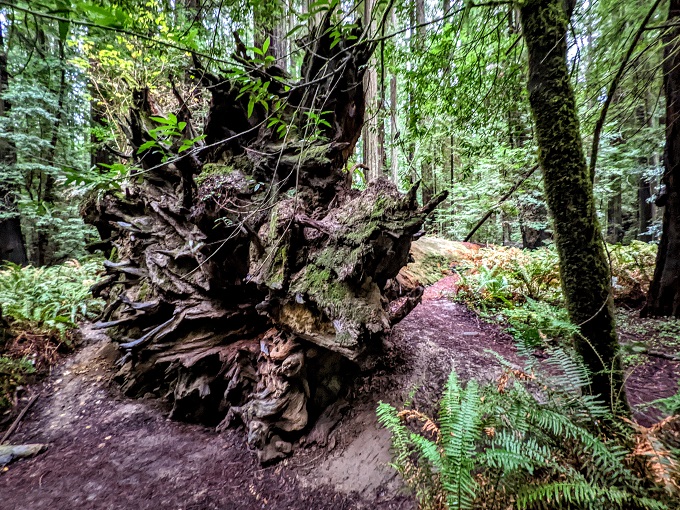
Although the base of the tree looks big in the photo above, it looks even bigger with Shae standing next to it.
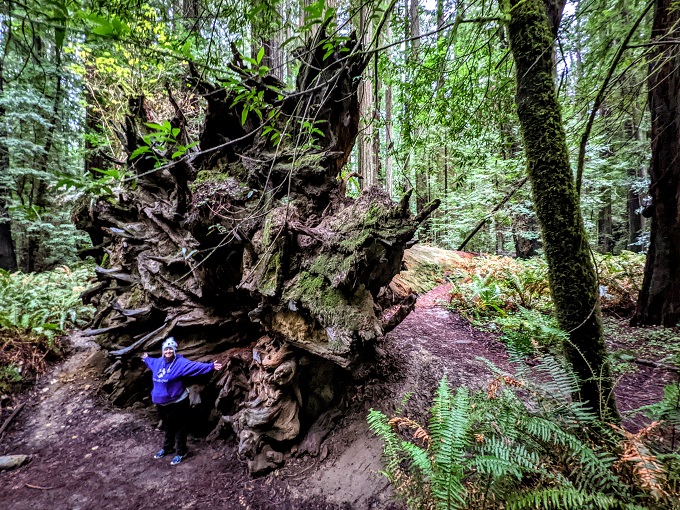
I took a video while walking alongside the tree to show quite how long it is. My phone takes good photos in the dark, but unfortunately the video I took turned out a little dark, but it still hopefully gives a good idea of its size.
Final Thoughts
Visiting the redwoods on the Avenue of the Giants was a great experience. I’d seen photos of them online, but nothing compares to seeing them in person and so I’d recommend visiting northern California and driving along Avenue of the Giants so you can experience this kind of nature yourself.
Never leave a dog in the car, even when you think it’s not too hot. We, as a veterinarian, would never suggest that, as dog temperatures are vastly different than people temperatures. Please never do that again.
This isn’t something we would normally do, but we verified before leaving her for a short time that the car wouldn’t get too hot or cold. It was 50° F that day and the car stayed the same temperature, otherwise we’d never have risked leaving her in there.